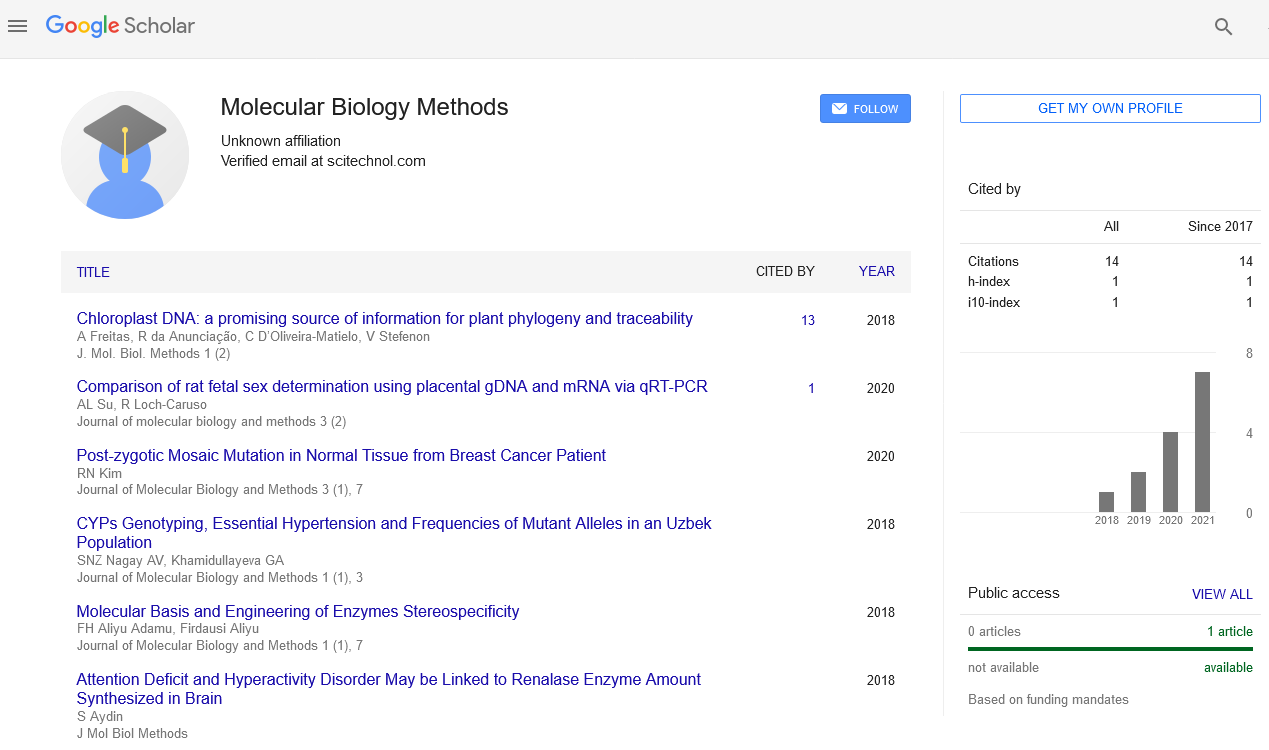Editorial, J Mol Biol Methods Vol: 4 Issue: 6
Fundamentals of Genetic Engineering and Cloning Genes
Hongxing Cao*
Department of Molecular Engineering, University of Central Florida, Orlando, USA
- Corresponding Author:
- Hongxing Cao
Department of Molecular Engineering, University of Central Florida, Orlando, USA
E-mail:hongxing1976@163.com
Received date: November 03, 2021; Accepted date: November 18, 2021; Published date: November 25, 2021
Keywords: Cloning Genes
Editorial Note
Genetic engineering comprises multiple techniques for the intentional manipulation of genetic material primarily deoxyribonucleic acid, or DNA to alter, repair, or enhance form or function. Recombinant DNA technologies, developed in the latter half of the twentieth century, include the chemical splicing recombination of different strands of DNA generally using either bacterium such as Escherichia coli or bacteriophages viruses that infect bacteria, such as λ phage, or by direct microinjection. In recent years, these traditional tools have been supplemented by new techniques to design and build literally, to engineer novel life forms, generally referred to as synthetic biology.
Genetic engineering, writ large, raises a number of significant ethical issues. In agriculture, for instance, ethicists have highlighted potential human health hazards associated with genetically modified crops and livestock, as well as normative concerns about the treatment of animals and the ecological consequences of genetic engineering. In medicine, there has been significant ethical controversy about the putative distinction between protocols meant to restore function and those meant to enhance function beyond species-typical norms. Additionally, ethicists have attended to the potential human health risks associated with germ-line genetic engineering, as distinct from somatic genetic engineering. Finally, in the context of reproduction, ethicists have argued that genetic engineering raises ethical issues involving the screening and manipulation of embryos to eliminate or introduce various medical and/or cosmetic characteristics.
In relation to public health specifically, genetic engineering raises additional ethical issues concerning not only the potential societal consequences of genetic engineering, but also the wisdom of genetic manipulation of plants, animals, and humans. In pursuit of the goals of health promotion and illness prevention, public health initiatives have traditionally sought to improve sanitation, ensure the availability of clean water, and identify the source of, and develop vaccines for, infectious disease. But with the development of genetic engineering techniques and the sequencing of the genomes of plants and animals (including humans), the scope of possible public health interventions has increased dramatically but so too have the threats to public health.
Genetic engineering, also called recombinant DNA technology, involves the group of techniques used to cut up and join together genetic material, especially DNA from different biological species, and to introduce the resulting hybrid DNA into an organism in order to form new combinations of heritable genetic material. These achievements led to concerns in the scientific community about potential risks from genetic engineering. To address these concerns, a meeting was held in 1974 at the Asilomar Conference Center in California. The conference was a milestone in the development of social awareness and of public responsibility among scientists. A few of the innovators of the new technology realized its commercial potential and established private biotechnology companies. One of the first to do this was Boyer who founded Genentech Inc. The company developed the production of human insulin in bacteria. Genetically engineered human insulin has provided a reliable, expandable, and constant supply for diabetics around the world.
Cloning Genes
All of the manipulations of genetic engineering require multiple copies of the DNA sequence or gene of interest. The original methods of getting multiple copies relied on bacteriophage or plasmid vectors to introduce the foreign DNA into bacteria to produce these copies, as each modified cell produces multiple copies, and the bacterial culture itself increases. This is done by first physically isolating the vector, opening its DNA with a restriction enzyme and binding in DNA from the organism being studied that has also been cleaved with a restriction endonuclease. A new population of bacteria is then infected with the altered vector. Given an appropriate way of selecting the population of bacteria so that it uniformly has the DNA of interest multiplying within, one can isolate a large population of vector molecules with the desired sequence, which is then freed by enzymatic cleavage once again.
 Spanish
Spanish  Chinese
Chinese  Russian
Russian  German
German  French
French  Japanese
Japanese  Portuguese
Portuguese  Hindi
Hindi 